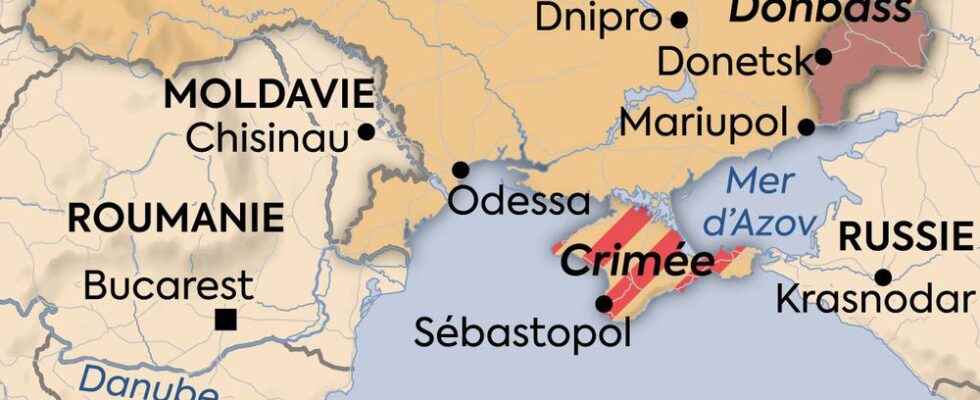The possibility of an armed conflict between Ukraine and Russia keeps getting closer. The Donbass region, in the east, which crystallizes tensions between the two countries, has witnessed for two days multiple clashes between Ukrainian soldiers and locally established separatist armed forces. Especially around the cities of Donetsk, capital of a new self-proclaimed pro-Russian state, and Lugansk, the other main separatist stronghold.
According to the Ukrainian army and the rebels, ceasefire violations numbered in the dozens on Friday, but no side reported deaths along the front line of several hundred kilometers. Observers from the Organization for Security and Cooperation in Europe (OSCE) reported a significant increase in shootings, with 189 violations of the ceasefire in the Donetsk region on Thursday, against 24 on Wednesday. In the Lugansk region, 402 violations were reported against 129. Ukrainians and separatists accused each other of firing heavy weapons at the adversary and targeting civilians.
The Express
Bombings and “sabotage”
This Friday, bombings took place in Stanitsa Luganska, under the control of Kiev, which assured that it had “no intention” to attack anyone. “We are strengthening our defence. But we have no intention of carrying out any offensive,” Defense Minister Oleksiï Reznikov told deputies during a parliamentary session, also directly accusing the separatists. “The main target of this attack was civilians. It is a war crime and an open provocation,” he added. “Keep a cool head. The provocations will not stop.”
According to the NGO Vostok SOS, which helps people in eastern Ukraine, more than 20 apartment buildings were damaged in total by the bombardments in Stanitsa Luganska, as well as a kindergarten. Three adults were slightly injured. The operation of mobile telephone networks is disrupted in Stanitsa Luganska, as in Severodonetsk, not far from there, noted AFP journalists. “Acts of sabotage”, according to Anton Gerashchenko, an adviser to the Ukrainian Ministry of the Interior who believes on Telegram messaging that “this is part of Russia’s plan to destabilize Ukraine”.
100 km south-west of there, on the front line in Novolouganské, Ukrainian soldiers have also observed more intense fighting in recent days. “Before, they fired with small arms, conventional grenades, grenade launchers. But now they use more serious weapons: artillery and anti-tank missiles,” said a soldier named Andriï. “We don’t retaliate,” he said. “If they launch a direct offensive, we’ll have to hold them back. Otherwise, we don’t respond to provocations.”
Evacuations of civilians to Russia
These tensions could effectively serve as a fuse, in order to justify the intervention of thousands of Russian troops at the gates of Ukraine. At least that is what other Western nations fear, led by the United States. Its officials warned on Friday that far from the military de-escalation promised by Moscow a few days ago, more Russian troops are moving towards the border regions with Ukraine. About 150,000 Russian soldiers are now based there.
These clashes are already generating the first major movements in the Donbass. “Today, a massive and centralized departure of the population is being organized to the Russian Federation, in the first place, women, children and the elderly must be evacuated,” said Denis Pushilin, who heads the “People’s Republic from Donetsk”, in a video posted on his Telegram account. A siren sounded in the city after these announcements. A car also exploded in the city in the evening.
“In order to avoid casualties among civilians, I call on the inhabitants of the republic (…) to leave as soon as possible for the territory of the Russian Federation”, also said the head of the ” People’s Republic of Lugansk,” Leonid Passetchnik, in a statement released by local media.
According to them, the Ukrainian army is preparing an offensive to invade their two regions. Russian President Vladimir Putin also noted on Friday a deterioration in the situation in eastern Ukraine. Unsurprisingly, the leader conveniently accuses Kiev of fueling the conflict. These intertwined events rather suggest a “scenario” of “provocations” according to the head of American diplomacy Antony Blinken. Which would inevitably lead to a Russian invasion. The one so dreaded for months now.
